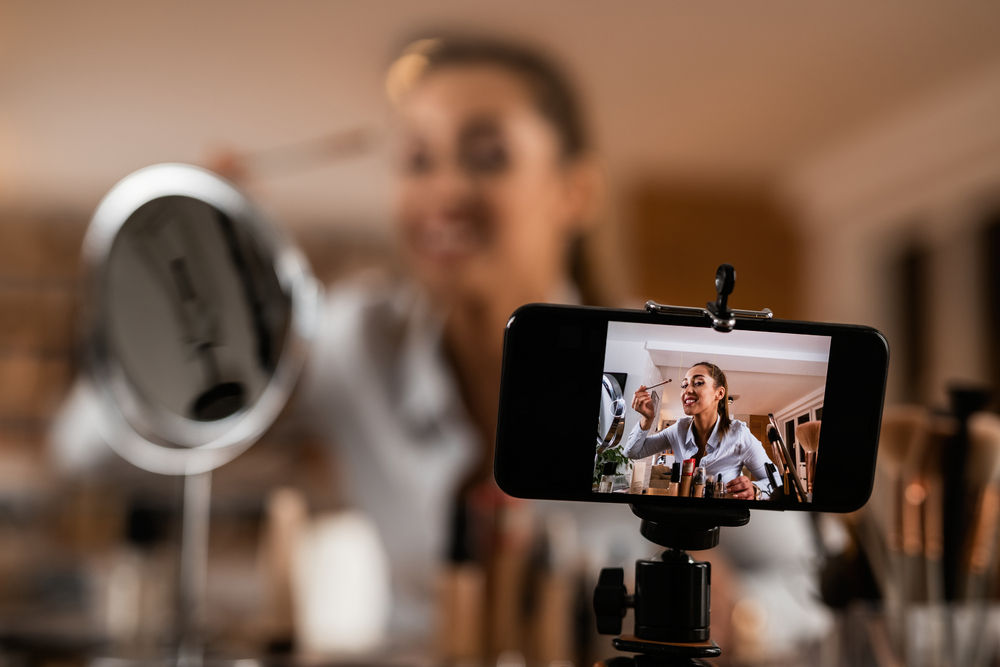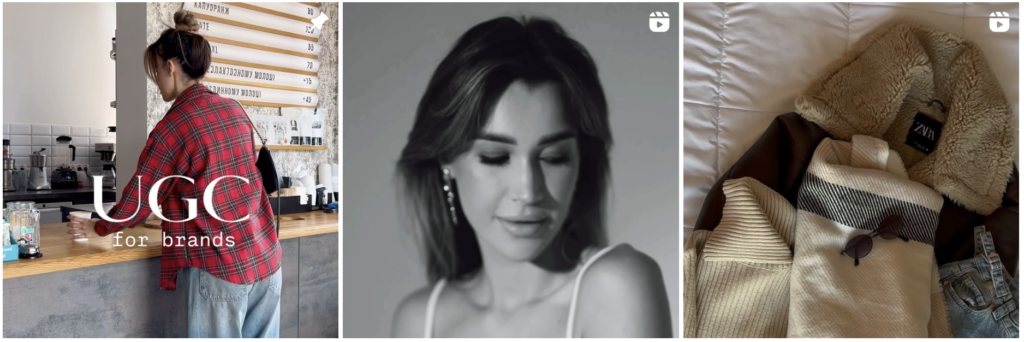User-generated content (UGC) has become a pivotal element in today’s digital landscape. It refers to any form of content created by consumers rather than brands, which enhances authenticity and engagement. As businesses increasingly recognize the value of this content, UGC stands out as a powerful tool in their marketing strategies.
The rise of social media platforms has transformed how brands interact with consumers. UGC not only boosts brand loyalty but also fosters a community around a brand, allowing for genuine customer relationships. This evolution illustrates how traditional marketing is shifting toward a more collaborative approach, where consumers play an essential role.
Brands leveraging UGC often see higher levels of trust and awareness among their target audiences. By incorporating authentic content into their marketing efforts, they can create a more relatable and engaging experience for consumers. This strategy ultimately drives better results and fosters long-term loyalty.
Key Takeaways
- UGC enhances authenticity and consumer engagement.
- Incorporating UGC can strengthen brand loyalty.
- Authentic content is key to successful marketing strategies.
The Impact of UGC on Social Media Dynamics
User-generated content (UGC) plays a crucial role in shaping social media dynamics. It enhances brand awareness, drives engagement, and creates trends that resonate with audiences across various platforms.
The Role of Social Media in Amplifying UGC
Social media platforms act as catalysts for disseminating user-generated content. Brands leverage these channels to encourage creativity among their audiences. Campaigns that incorporate branded hashtags enable users to easily share their content, increasing visibility.
For example, Coca-Cola’s “Share a Coke” campaign motivated consumers to post images with personalized bottles. This not only generated significant engagement rates but also reinforced brand identity. User contributions transform into compelling narratives that brands can share, fostering community and connection.
Case Studies: Successful UGC Campaigns
Several brands have effectively utilized UGC to elevate their social media presence. Starbucks’ #WhiteCupContest invited customers to decorate their cups, generating thousands of posts that highlighted creativity and community involvement. This initiative not only showcased customer designs but also emphasized Starbucks’ focus on personalization.
Another example is Away’s Instagram strategy, encouraging customers to share travel photos with their bags. This not only created authentic content but also positioned the brand within aspirational travel narratives. Successful UGC campaigns often inspire loyalty and create a sense of belonging among users.
Understanding Virality and Engagement Through Challenges

Challenges are an effective mechanism to drive virality among user-generated content. Brands often initiate competitions that engage audiences and prompt sharing. As users participate, they naturally amplify the reach and impact of the brand’s message.
The ALS Ice Bucket Challenge exemplifies this phenomenon, demonstrating how a simple action can yield massive engagement and visibility. In addition, Asos regularly introduces fashion challenges that encourage users to showcase their styles, blending user creativity with brand marketing.
These strategies not only enhance engagement rates but also build a community around shared interests. Engaging challenges encourage users to participate actively, ensuring their content reaches wider audiences across multiple social media platforms.
Incorporating UGC into Marketing Strategies

User-generated content (UGC) provides brands with opportunities to enhance credibility and engagement. Through strategic planning, brands can effectively integrate UGC to amplify their marketing efforts and foster stronger relationships with their audience. Even if you’re short on actual user submissions, you can use an AI UGC tool to create content that retains the authenticity of user-generated posts and maintains your content momentum.
Developing a Content Strategy with UGC
A focused content strategy is essential for leveraging UGC. Brands should actively encourage customers to create content through campaigns or contests. This can lead to a wealth of authentic material, including videos and photos that depict real-life experiences with products.
Key steps include:
- Identify UGC Sources: Social media, blogs, and review sites are primary channels for discovering UGC.
- Content Guidelines: Provide clear guidelines to ensure submissions align with brand values and quality standards.
- Regular Engagement: Engage with users by sharing their content on official channels to foster community and inspire more contributions.
Leveraging Influencers and Customer Reviews
Influencers play a critical role in spreading UGC. Collaborating with influencers who align with brand ethos can greatly amplify reach. They can showcase products in authentic contexts, influencing their followers’ purchasing decisions.
Key considerations:
- Select Relevant Influencers: Choose influencers whose values align with the brand’s target audience.
- Encourage Honest Reviews: Authentic customer reviews contribute to trust. Brands should actively seek feedback and share it across platforms.
- Amplify Peer Recommendations: Highlighting customer experiences can serve as powerful social proof, enhancing credibility.
Conversion Rate Optimization Using Authentic UGC
Authentic UGC can significantly impact conversion rates. By incorporating real customer testimonials and reviews, brands provide potential buyers with relatable and trustworthy insights.
Effective methods include:
- Display Reviews Prominently: Feature customer feedback on product pages to give insights into user experiences.
- Utilize Visual UGC: Images and videos showcasing real users can enhance engagement and drive action.
- Track Conversion Metrics: Monitor how UGC affects purchasing behavior to refine strategies. Analyzing metrics provides insights into what content resonates most with the audience.
By focusing on these elements, brands can create a robust foundation for integrating UGC into their marketing strategies effectively.
Leveraging UGC for Enhanced Brand Loyalty and Awareness
User-generated content (UGC) serves as a powerful catalyst for bolstering brand loyalty and awareness. By harnessing customer photos, posts, and experiences, companies can create authentic narratives that resonate with their audience. This approach fosters a sense of community and enhances engagement.
Creating Authentic Brand Narratives
Authenticity is crucial in building a connection with consumers. UGC helps brands convey relatable stories that reflect real customer experiences.
When a brand features content shared by its customers, it showcases genuine interactions that resonate more than polished advertisements. For instance, showcasing customer testimonials or photos on social media platforms can create an emotional link between the brand and its audience.
Furthermore, incorporating UGC in marketing materials can strengthen storytelling efforts. Brands that effectively share their customers’ journeys create a narrative that potential buyers find relatable, enhancing trust and appreciation.
Building an Online Community Around UGC
Creating an online community centered on UGC encourages customer engagement. Inviting customers to share their experiences fosters a sense of belonging.
Brands can implement various strategies to cultivate this community. For example, they can organize contests that prompt users to share photos using a specific hashtag. This not only increases engagement but also generates a wealth of UGC that can be repurposed.
Moreover, responding to customer posts strengthens the relationship between the brand and its consumers. Engaging with customers through comments and shares creates a two-way dialogue, increasing loyalty as customers feel valued and recognized.
The Economical Advantage of UGC in Marketing
UGC presents a cost-effective alternative to traditional marketing strategies. Utilizing content created by customers reduces the need for expensive campaigns while producing authentic material.
Brands can significantly lower content creation costs by leveraging customer-generated visuals. This method also enhances the credibility of marketing efforts, as potential customers often perceive UGC as more trustworthy than traditional advertisements.
Additionally, UGC can amplify reach without requiring substantial advertising budgets. By encouraging sharing and interaction, brands can tap into wider audiences, as customers promote their favorite products within their networks, driving organic growth.
Content Curation and Creation with UGC
User-generated content (UGC) plays a pivotal role in both content curation and creation. By leveraging the authentic perspectives of customers, brands can enhance engagement and drive marketing campaigns effectively. This section explores best practices for curating UGC, inspiring creativity through contests, and transitioning from passive UGC contributions to active participation.
Best Practices for Curating UGC


Our project Sky Rye Design cooperates with Ilona, known as @ila_tarapata on Instagram, is a cool author in the world of User Generated Content (UGC) creation. With a following of over 1,700 people, she has carved out a niche for herself in the competitive digital landscape. Ilona specializes in creating engaging content for brands, focusing on UGC, GRWM (Get Ready With Me) videos, and modeling.
Based in Kyiv, Ilona balances her creative pursuits with motherhood, often incorporating her family life into her content. Her posts range from beauty tips to lifestyle snippets, always maintaining a personal and relatable touch. This approach has helped her build a loyal audience that appreciates her authenticity and creativity.
As a UGC creator, Ilona offers a variety of services to brands looking to enhance their social media presence. Her content creation skills extend beyond just filming, encompassing concept ideation, scripting, and editing. With her keen eye for trends and understanding of what resonates with viewers, Ilona has become a valuable asset for companies seeking to connect with their target audience in a more genuine and impactful way.
To curate effective UGC, brands should establish clear guidelines for submissions. This might include setting parameters around content type, tone, and themes. By doing so, brands ensure that the UGC aligns with their marketing objectives.
Use Analytics Tools: Tracking user engagement helps determine which types of UGC resonate most with the target audience. Brands can measure likes, shares, and comments to identify popular content.
Focus on Honesty: Authenticity is key in UGC. Brands should prioritize content that reflects genuine customer experiences. This builds trust and can influence potential buying decisions.
Inspiring UGC Through Creativity and Contest
Contests can stimulate UGC creation effectively. Organizing a challenge—like a photo or video contest—encourages users to share their creativity. A successful example is the “White Cup Contest,” where users submitted artistic designs on a branded product.
Set Clear Objectives: Define what the contest aims to achieve, be it brand awareness, engagement, or product promotion.
Offer Attractive Incentives: Providing appealing rewards—such as product giveaways or feature opportunities—motivates participation and fosters excitement around the brand.
Transitioning from Passive to Active UGC Contributions

Transitioning from passive to active contributions requires strategic engagement. Brands should foster a community where customers feel encouraged to share their stories.
Create a Dedicated Space: Establish platforms where users can easily submit content. This could be through social media hashtags or designated pages on brand websites.
Engage Regularly: Acknowledging and responding to UGC helps build relationships. This engagement not only nurtures contributions but also encourages brand loyalty over time.
The Shift from Traditional Marketing to Social Commerce


The marketing landscape has changed significantly with the rise of social commerce. Businesses are increasingly utilizing user-generated content (UGC) and online reviews to engage customers and enhance conversion rates.
Social Commerce Strategies Powered by UGC
Incorporating user-generated content into social commerce strategies has proven effective. Users create authentic promotional content, which fosters trust. Customer reviews and photos can serve as strong endorsements, influencing potential buyers.
To leverage UGC, brands can run campaigns that encourage customers to share their experiences. This not only boosts engagement but also generates a stream of content that can be repurposed across various platforms. The visual nature of UGC amplifies brand visibility, allowing for organic traffic growth.
Integrating UGC with E-commerce Platforms
Integrating UGC into e-commerce platforms enhances the shopping experience. Many online retailers now showcase customer reviews and images directly on product pages. This approach provides potential buyers with immediate social proof, which can improve conversion rates substantially.
Moreover, brands can use UGC in targeted email campaigns. Including customer testimonials can make promotional content feel more relatable. Potential customers are more likely to respond to real-life experiences rather than traditional advertising.
The Intersection of UGC and Search Engine Optimization
User-generated content plays a crucial role in search engine optimization (SEO). Incorporating authentic customer reviews can enhance keyword relevance on product pages. This attention to organic traffic is vital for brands looking to improve their visibility online.
Additionally, fresh UGC can help maintain an active presence, favorably impacting search rankings. Regular updates from customers keep content dynamic, increasing the likelihood of being indexed by search engines. This strategy also encourages customers to engage more frequently with the brand, further supporting SEO efforts.
Evaluating the Success of UGC Initiatives

Evaluating user-generated content (UGC) initiatives requires attention to specific metrics, insights into consumer behavior, and adaptation to current trends. Engaging effectively with UGC can significantly influence brand perception and reach.
Metrics and Analytics for UGC Engagement
Metrics play a crucial role in assessing UGC initiatives. Key indicators include engagement rates, which can be tracked through likes, shares, and comments. Analytics tools such as Google Analytics and social media insights provide data on audience interaction.
Data visualization tools can help identify trends in engagement over time. Brands should focus on content that performs above average to understand what resonates with their audience. Additionally, comparing UGC performance against brand-specific content can reveal effectiveness.
Adapting to UGC Trends and Consumer Behavior


Staying updated on trends is essential for adapting UGC strategies. Platforms like TikTok and Instagram continue to influence how brands use consumer-generated content. By analyzing audience insights, brands can tailor their strategies to suit changing preferences.
Trends such as short-form videos or challenges often engage consumers more effectively. Brands benefit from leveraging influencer marketing when aligning UGC with those trends to enhance visibility. Understanding consumer behavior helps brands anticipate changes and adjust campaigns accordingly.
Real-Time Content and Live Streaming
The rise of live streaming presents a powerful opportunity for UGC engagement. Real-time content creates immediacy, encouraging interaction from audiences. Platforms like TikTok and Instagram facilitate live events that generate buzz and foster community.
Engaging with viewers during live sessions leads to higher levels of interaction. Brands can invite users to create content surrounding the event, boosting participation. This engagement enhances relatability, allowing consumers to feel more connected to the brand.
- 13shares
- Facebook0
- Pinterest10
- Twitter3
- Reddit0





